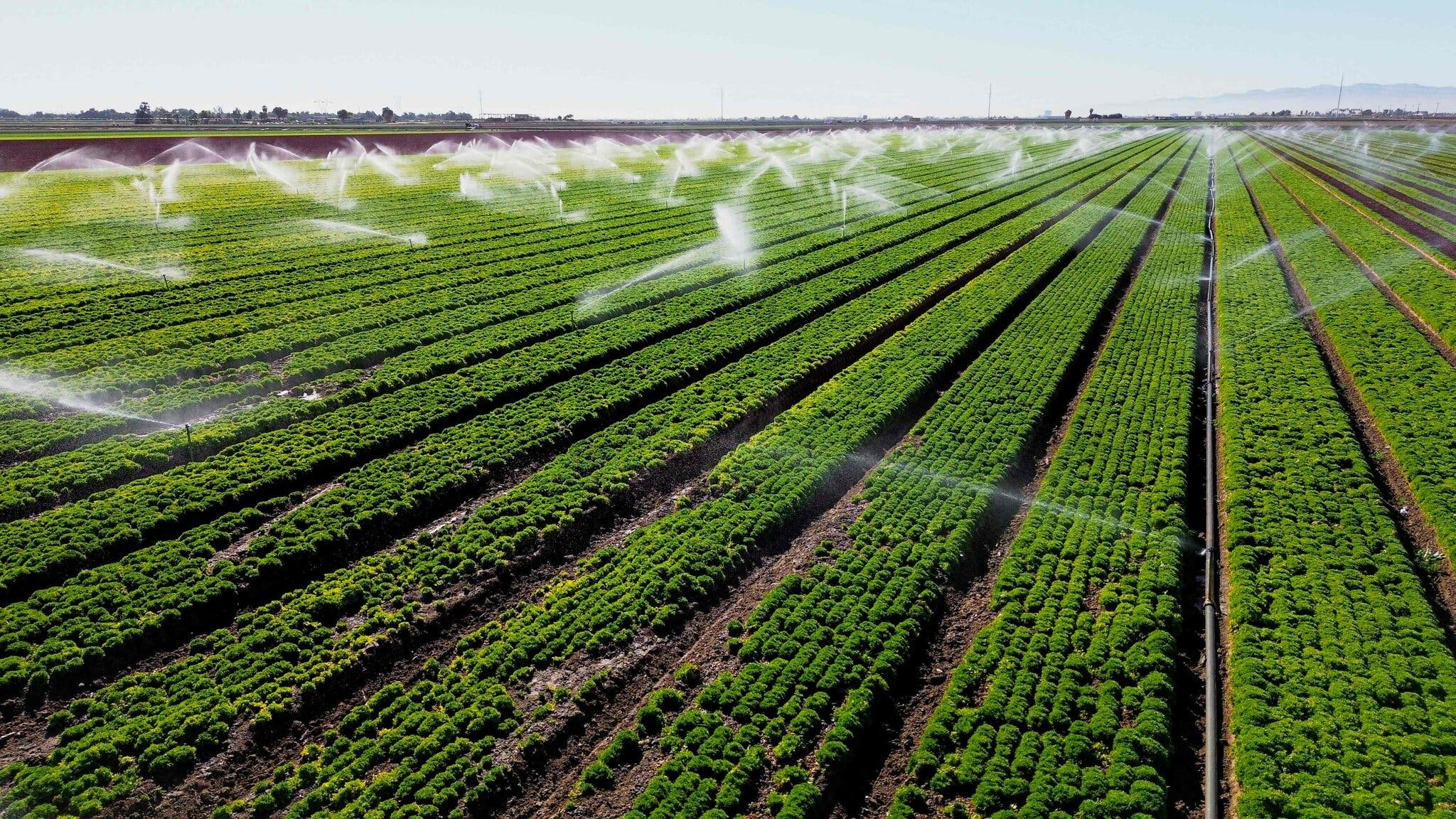A lettuce field in Holtville, Calif. Of seven states that get their water from the Colorado River, California draws the largest share. ||Credit…Sandy Huffaker/Agence France-Presse — Getty Images
The agreement on cuts, aided by a wet winter and $1.2 billion in federal payments, expires at the end of 2026.
Christopher Flavelle
The New York Times
Arizona, California and Nevada have agreed to take less water from the drought-strained Colorado River, a breakthrough agreement that, for now, keeps the river from falling so low that it would jeopardize water supply for major Western cities like Phoenix and Los Angeles as well as for some of America’s most productive farmland.
The agreement, announced Monday, calls for the federal government to pay about $1.2 billion to irrigation districts, cities and Native American tribes in the three states if they temporarily use less water. The states have also agreed to make additional cuts beyond that amount to generate the total reductions needed to protect the collapse of the river.
Taken together, those reductions would amount to about 13 percent of the total water use in the lower Colorado Basin — among the most aggressive ever experienced in the region, and likely to require significant water restrictions for residential and agriculture uses.
The Colorado River supplies drinking water to 40 million Americans in seven states as well as part of Mexico and irrigates 5.5 million acres of farmland. The electricity generated by dams on the river’s two main reservoirs, Lake Mead and Lake Powell, powers millions of homes and businesses.
But drought, population growth and climate change have dropped the river’s flows by one-third in recent years compared with historical averages, threatening to provoke a water and power catastrophe across the West.
California, Arizona and Nevada get their shares of water from Lake Mead, which is formed by the Colorado River at the Hoover Dam and is controlled by the federal government. The Bureau of Reclamation, an agency within the Interior Department, determines how much water each of the three states receives. The other states that depend on the Colorado get water directly from the river and its tributaries.
The agreement struck over the weekend runs only through the end of 2026, and still needs to be formally adopted by the federal government. At that point, all seven states that rely on the river — which include Colorado, New Mexico, Utah and Wyoming — could face a deeper reckoning, as its decline is likely to continue.









